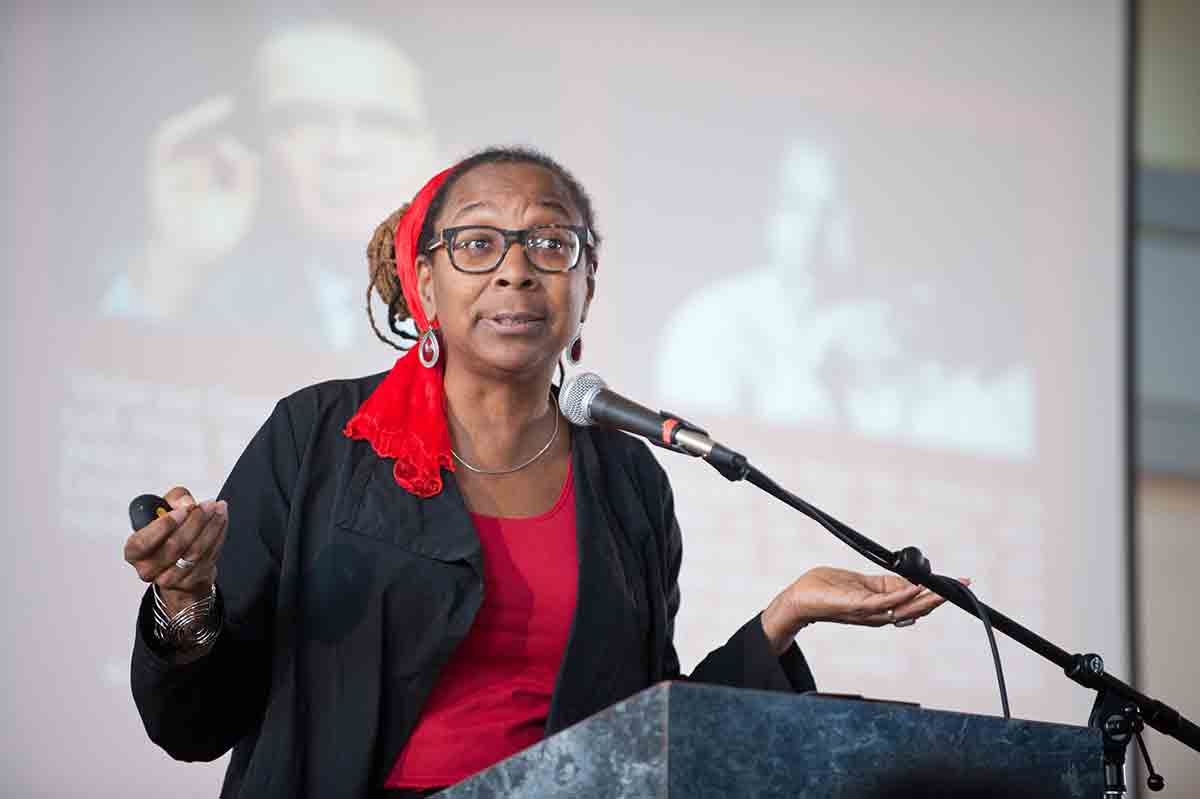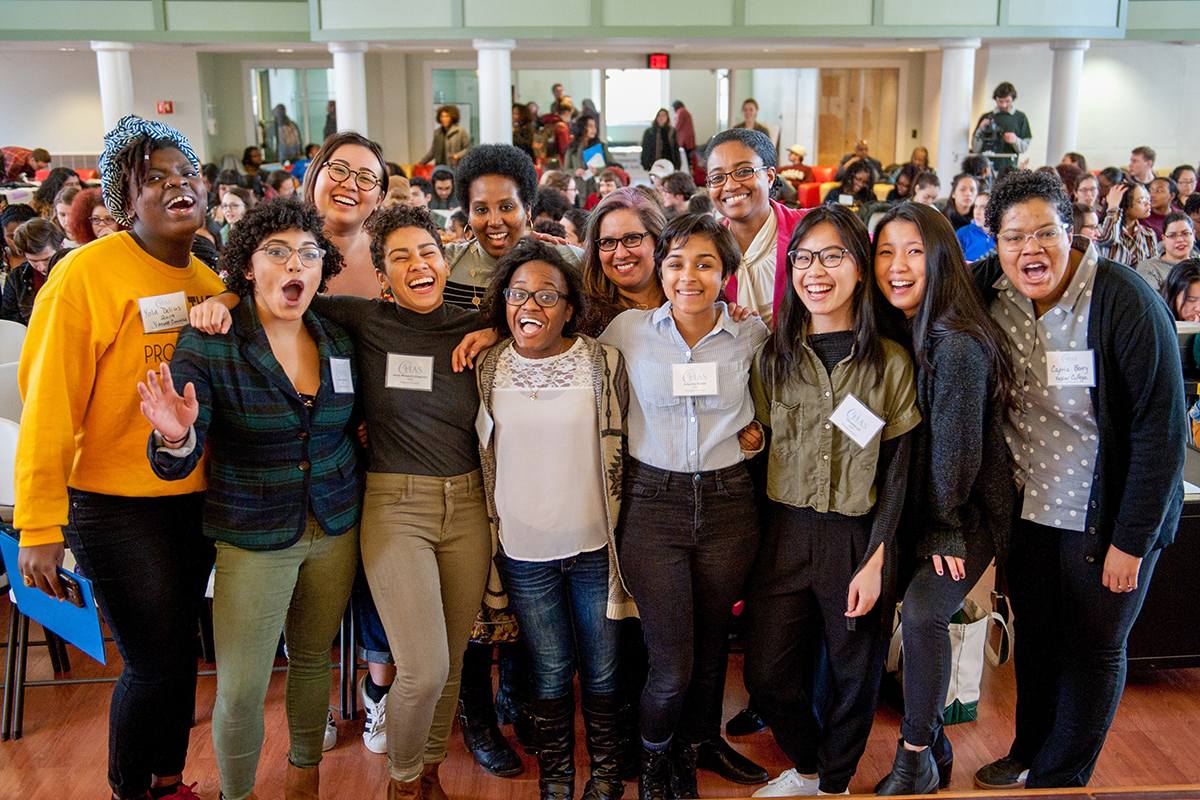(Re)defining Women of ColorRaising Our Voices, Sharing Our Stories
(Re)defining Women of ColorRaising Our Voices, Sharing Our Stories
About halfway through her talk, renowned legal scholar and civil rights activist Kimberlé Crenshaw asked her audience of over 400 to stand up. “I’m going to say some names,” she said, “and just to have full transparency, whoever is standing last gets to tell me who the last name I mentioned is.” If you recognized a name, you were to remain standing. If you didn’t recognize the name, you were to sit down.

Mike Brown. Eric Garner. Tamir Rice. Freddie Gray.
“No one has taken a seat yet,” said Crenshaw.
Michelle Cusseaux.
More than a few audience members took their seats.
Tanisha Anderson. Natasha McKenna. Maya Hall.
By the time she said the last name, only six people were left standing.
The audience was predominantly people of color, predominantly woman-identified, and entirely from Vassar and other elite liberal arts institutions. How is it that they universally recognized the names of black men who were victims of the police, but not the names of black women, many of whom were killed within days of their male counterparts?
The answer is complicated. It has to do with frameworks—what we see or allow ourselves to see; baselines—what our assumptions are; and intersectionality, a term that Crenshaw coined in the late 1980s to describe the compounded and interconnected effects of all forms of institutionalized oppression. If you—“you” meaning not only individuals but the media and social institutions—begin with a baseline assumption that black men are disproportionately targeted by law enforcement, you are going to be less likely to see, report on, or pay attention to the similar experiences of black women. The baseline assumption effectively erases the reality and reinforces itself.
Crenshaw’s talk, “Against Normalization: Intersectionality and Social Justice in the Age of Trump,” was the keynote address for the fourth annual Women of Color Conference, sponsored by the Consortium on Higher Achievement and Success (CHAS) and hosted by Vassar on March 3, 2017. The three-day conference, (Re)defining Women of Color: Raising Our Voices, Sharing Our Stories, brought together participants from consortium institutions for a series of workshops and networking opportunities.
“We had a great turnout, 185 participants from 13 colleges and universities,” says Wendy Maragh Taylor, Director of the ALANA Center and one of the principal organizers of the conference. “I continue to hear positive feedback about Crenshaw’s talk and the weekend workshops. Participants raved about the student TED Talks, and they also appreciated the opportunities to meet together and build community across institutions.”

One of the student organizers, Precious Davis ‘20, says that interacting with women of color from other predominantly white institutions was especially helpful. “It really helped me learn about how to occupy the space here at Vassar,” she says. “And I loved our keynote speaker. I continue to reference what she talked about during her lecture. I feel so honored that she came to our campus.”
Taylor and her planning committee had been at work since last October organizing the conference. When they learned that they had secured Crenshaw as the keynote speaker, they decided to open the lecture on very short notice to the entire community. The 200 chairs they had set up accommodated less than half of the turnout, with students, faculty, administrators, and staff sitting on the floor, filling the balcony, and leaning against the walls. “The Vassar students, faculty, and administrators who worked so hard to make this happen contributed to how powerful the conference was for our women-identified students of color,” says Taylor. “We had an amazing conference!”